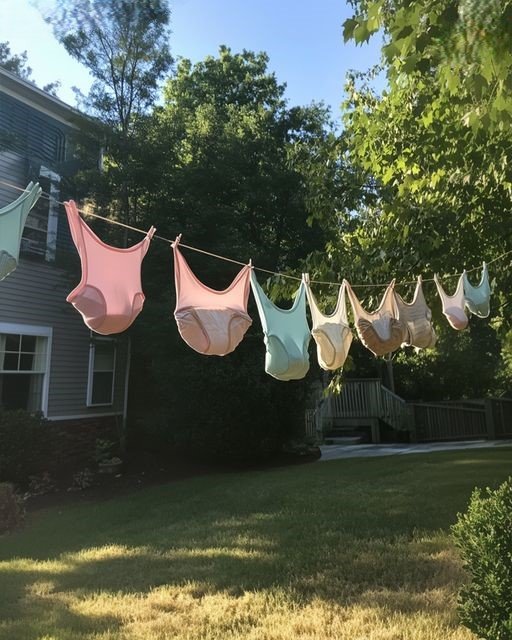Weeds—just the word can make any gardener groan. They pop up when you least expect them, steal nutrients from your favorite flowers, and seem to grow twice as fast as anything you actually want in your garden. But here’s a trick that feels a bit like gardening jiu-jitsu: instead of fighting weeds, you can outsmart them.
How? By growing plants that naturally smother or outcompete weeds. These ground-covering champs block sunlight, crowd out invaders, and in some cases, even release natural chemicals that discourage unwanted guests.
If you’re tired of pulling weeds every weekend, it’s time to let your garden do some of the work for you. Let’s dig into 9 powerhouse plants that help stop weeds in their tracks—while making your garden look stunning.
1. Creeping Jenny (Lysimachia nummularia)
Low, lush, and fast-growing, Creeping Jenny forms a dense mat of bright green or golden foliage that hugs the ground and leaves little room for weeds to squeeze through.
- Best for: Borders, under trees, containers
- Sun needs: Full sun to part shade
- Bonus: It’s great in hanging baskets, too, where it spills over the edges beautifully.
Tip: In warmer climates, it can spread aggressively—so keep an eye on it!
2. Sweet Woodruff (Galium odoratum)
Want something pretty and fragrant? Sweet Woodruff is your go-to. This dainty little plant has star-shaped leaves and tiny white flowers, and it loves shady areas where weeds often creep in unnoticed.
- Best for: Shady spots, under shrubs, woodland gardens
- Sun needs: Full to partial shade
- Bonus: Dried Sweet Woodruff smells like fresh hay and makes a lovely natural air freshener.
3. Ajuga (Ajuga reptans)
Also called Bugleweed, Ajuga grows fast and lays down thick, weed-blocking cover. Its glossy leaves come in shades of green, burgundy, and bronze—and in spring, it shoots up stunning blue flower spikes.
- Best for: Slopes, pathways, shady or partially sunny areas
- Sun needs: Part shade to full sun
- Bonus: It’s a bee magnet when in bloom!
4. Thyme (Thymus spp.)
Talk about a multitasker—thyme adds flavor to your meals and keeps weeds at bay. Creeping varieties, like woolly or mother-of-thyme, spread low and wide, covering ground with fragrant foliage.
- Best for: Rock gardens, between stepping stones, borders
- Sun needs: Full sun
- Bonus: Drought-tolerant and attracts pollinators like crazy.
5. Sedum (Sedum spp.)
If you’re working with dry soil or a tough-to-grow spot, sedum might be your answer. These succulents are low-maintenance, drought-resistant, and form thick mats that make life hard for weeds.
- Best for: Dry areas, slopes, rock gardens
- Sun needs: Full sun
- Bonus: Some types bloom late in the season, giving your garden a fall boost.
6. Hosta (Hosta spp.)
For shady gardens, hostas are a classic. Their big, broad leaves shade the soil and block light from reaching weed seeds below. Plus, they’re downright gorgeous.
- Best for: Shade gardens, under trees, damp spots
- Sun needs: Partial to full shade
- Bonus: Pair with mulch for double the weed-fighting power.
7. Clover (Trifolium repens)
Hear us out—clover isn’t just for lawns anymore. It grows low, stays green, fixes nitrogen in the soil, and competes well with weeds. White Dutch Clover is especially popular as a lawn alternative.
- Best for: Lawns, paths, cover cropping
- Sun needs: Full sun to part shade
- Bonus: Bees love the flowers, and your soil will thank you.
8. Pachysandra (Pachysandra terminalis)
This evergreen ground cover is a go-to in shady areas. It spreads quickly, covering bare soil with glossy green foliage that weeds just can’t compete with.
- Best for: Shady areas, under shrubs or trees
- Sun needs: Shade to partial sun
- Bonus: It stays green year-round in many zones.
9. Ferns (Various species)
Okay, not all ferns are aggressive growers—but some native varieties can create a solid weed-resistant patch in tough, shady corners. They unfurl slowly in spring and create a lush, forest-floor vibe that makes it hard for weeds to break through.
- Best for: Woodland gardens, damp shade
- Sun needs: Full to partial shade
- Bonus: They add texture and movement to your garden beds.
How to Use These Plants for Maximum Weed Control
Planting one or two of these is a good start—but if you really want to keep weeds out long-term, try these extra tips:
- Space them close together. Gaps give weeds an opening.
- Start with clean soil. Remove existing weeds before planting.
- Mulch around the edges. Even weed-suppressing plants need backup now and then.
- Water while establishing. Even tough plants need a head start.
Final Thoughts
You don’t need to spend hours each week yanking out weeds. By picking the right plants, you can create a living mulch that naturally blocks unwanted invaders. These 9 weed-fighting wonders not only save time and effort, but they also turn your garden into a beautiful, low-maintenance haven.
So go ahead—plant smarter, not harder.



